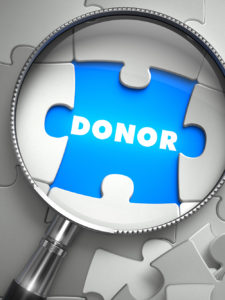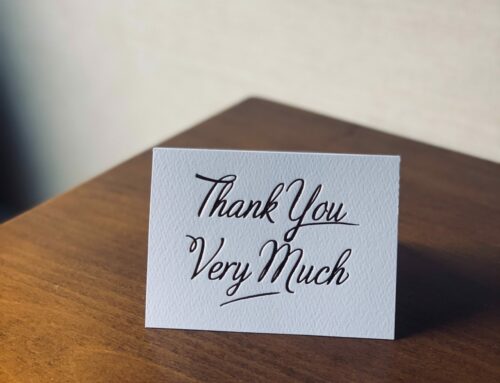You worked hard on the appeal. You poured your soul into the story.
And……
You got a gift! Yay!
Think you’re done?
Not quite.

It’s easy when you’re super busy to move on to the next thing on your ‘to do’ list. But the next most important thing you need to do is to get a powerful Thank You letter out the door.
And not just any old nonprofit Thank You letter. If you want your donor to give again, your letter needs to be warm and sincere, and make the donor feel really good about her decision to give. So you can’t just slap some paragraphs on a page and call it done.
It also can’t be predictable and stuffy like this:
“On behalf of the Board and staff of the XYZ Nonprofit, please accept our deepest appreciation for your donation…blah, blah, blah.”
If that’s how your letter starts, then make freshening it up Priority One!
The Kitchen Table Exercise
Fundraising is based on relationships. A well-done nonprofit Thank You letter will add points to the relationship account every time.
Want to create a warm, personable Thank You letter?
Try this:
Imagine your donor sitting across your kitchen table from you. You’re having a cup of coffee talking about the lives your nonprofit changes when she hands you a check. What would you say?
Write that down. THAT’S how you need to communicate. Write like you talk.
Your letters will be much personable and connecting.
No one talks with stiff, formal language. So don’t use it when you write.
Make the letter Donor Friendly
Another thing you can do to improve your letter is to strip out all the language that can make the donor feel like an outsider, like:
- Jargon. Ditch the fancy phrases like “disadvantaged population” and “at risk youth”. If the average person on the street doesn’t use the words in everyday conversation, they don’t need to be in your letter.
- Industry slang. Ditto. People don’t know what your ‘maintenance fees’ are or what a ‘nonoffending family member’ is.
- Acronyms. Just don’t use acronyms. When people don’t know what acronyms stand for, they can feel stupid or confused, and that’s the last thing you want someone to feel after reading their Thank You letter.
 Make sure you have a variety of Thank You letters so you have the right one for the right occasion. Have a letter just for people who attended your event, another one just for people who give on Giving Tuesday, another one for those who give to your year-end appeal, and so on.
Make sure you have a variety of Thank You letters so you have the right one for the right occasion. Have a letter just for people who attended your event, another one just for people who give on Giving Tuesday, another one for those who give to your year-end appeal, and so on.
And freshen up your general Thank You letter every month. Nothing’s worse than giving to your favorite nonprofit a couple of times during the year and getting the same old stale letter each time.






[…] Download Template More @ getfullyfunded.com […]
[…] you thank a donor for a gift, don’t ask for another. Keep the letter or email focused on its intended purpose: […]